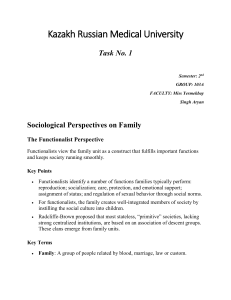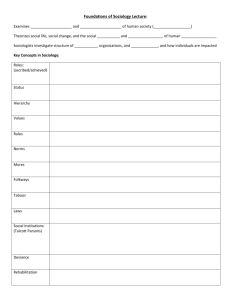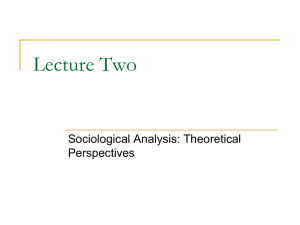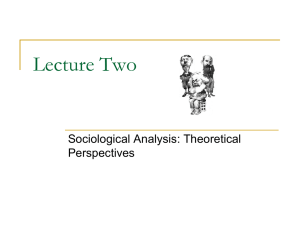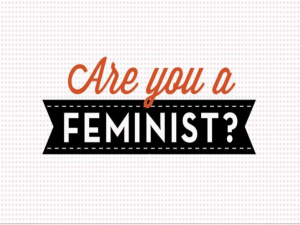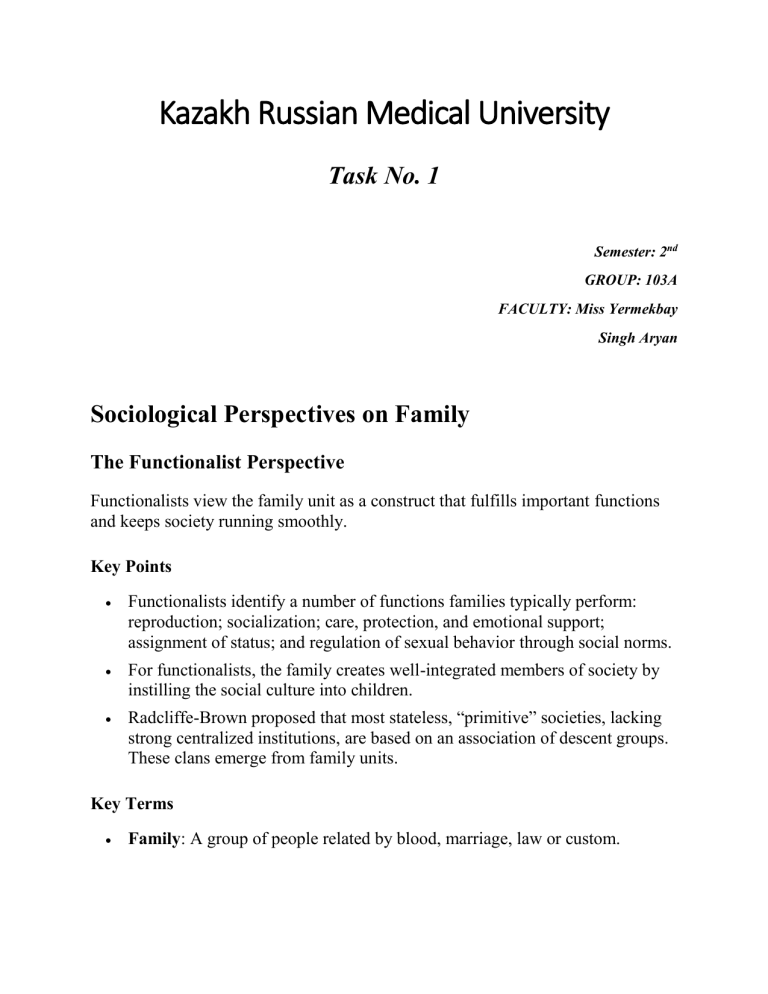
Kazakh Russian Medical University Task No. 1 Semester: 2nd GROUP: 103A FACULTY: Miss Yermekbay Singh Aryan Sociological Perspectives on Family The Functionalist Perspective Functionalists view the family unit as a construct that fulfills important functions and keeps society running smoothly. Key Points Functionalists identify a number of functions families typically perform: reproduction; socialization; care, protection, and emotional support; assignment of status; and regulation of sexual behavior through social norms. For functionalists, the family creates well-integrated members of society by instilling the social culture into children. Radcliffe-Brown proposed that most stateless, “primitive” societies, lacking strong centralized institutions, are based on an association of descent groups. These clans emerge from family units. Key Terms Family: A group of people related by blood, marriage, law or custom. Radcliffe-Brown: A British social anthropologist from the early twentieth century who contributed to the development of the theory of structuralfunctionalism. Institution: An established organization, especially one dedicated to education, public service, culture, or the care of the destitute, poor etc. Structural functionalism is a framework that sees society as a complex system whose parts work together to promote solidarity and stability. In this way, society is like an organism and each aspect of society (institutions, social constructs, etc.) is like an organ that works together to keep the whole functioning smoothly. This approach looks at society through a macro-level orientation, which is a broad focus on the social structures that shape society as a whole. Functionalism addresses society in terms of the function of its constituent elements: norms, customs, traditions and institutions. Functionalists, in general, identify a number of functions families typically perform: reproduction; socialization; care, protection, and emotional support; assignment of status; and regulation of sexual behavior through the norm of legitimacy. The Family Radcliffe-Brown proposed that most stateless, “primitive” societies that lack strong centralized institutions are based on an association of corporatedescent groups. Structural functionalism also took on the argument that the basic building block of society is the nuclear family, and that the clan is an outgrowth, not vice versa. Durkheim was concerned with the question of how certain societies maintain internal stability and survive over time. Based on the metaphor above of an organism in which many parts function together to sustain the whole, Durkheim argued that complicated societies are held together by organic solidarity. Functions of the Family For functionalists, the family creates well-integrated members of society and instills culture into the new members of society. It provides important ascribed statuses such as social class and ethnicity to new members. It is responsible for social replacement by reproducing new members, to replace its dying members. Further, the family gives individuals property rights and also affords the assignment and maintenance of kinship order. Lastly, families offer material and emotional security and provides care and support for the individuals who need care. The Conflict Perspective The conflict perspective views the family as a vehicle to maintain patriarchy (gender inequality) and social inequality in society. Key Points The conflict perspective describes the inequalities that exist in all societies globally, and considers aspects of society as ways for those with power and status to maintain control over scare resources. According to conflict theorists, the family works toward the continuance of social inequality within a society by maintaining and reinforcing the status quo. Through inheritance, the wealthy families are able to keep their privileged social position for their members. Conflict theorists have seen the family as a social arrangement benefiting men more than women. Key Terms Family: A group of people related by blood, marriage, law or custom. Inheritance: The passing of title to an estate upon death. Conflict Perspective: A perspective in the social sciences that emphasizes the social, political or material inequality of a social group; critiques the broad socio-political system; or otherwise detracts from structural functionalism and ideological conservativism. The Conflict perspective refers to the inequalities that exist in all societies globally. Conflict theory is particularly interested in the various aspects of master status in social position—the primary identifying characteristic of an individual seen in terms of race or ethnicity, sex or gender, age, religion, ability or disability, and socio-economic status. According to the Conflict paradigm, every society is plagued by inequality based on social differences among the dominant group and all of the other groups in society. When we are analyzing any element of society from this perspective, we need to look at the structures of wealth, power and status, and the ways in which those structures maintain social, economic, political and coercive power of one group at the expense of others. The Family According to conflict theorists, the family works toward the continuance of social inequality within a society by maintaining and reinforcing the status quo. Because inheritance, education and social capital are transmitted through the family structure, wealthy families are able to keep their privileged social position for their members, while individuals from poor families are denied similar status. Conflict theorists have also seen the family as a social arrangement benefiting men more than women, allowing men to maintain a position of power. The traditional family form in most cultures is patriarchal, contributing to inequality between the sexes. Males tend to have more power and females tend to have less. Traditional male roles and responsibilities are valued more than the traditional roles done by their wives (i.e., housekeeping, child rearing). The traditional family is also an inequitable structure for women and children. For example, more than 60 percent of all mothers with children under six are in the paid workforce. Even though these women spend as much (or more) time at paid jobs as their husbands, they also do more of the housework and child care. The Symbolic Interactionist Perspective Symbolic interactionists view the family as a site of social reproduction where meanings are negotiated and maintained by family members. Key Points Symbolic interactionism is a theory that analyzes patterns of communication, interpretation, and adjustment between individuals in society. The theory is a framework for understanding how individuals interact with each other and within society through the meanings of symbols. Role-taking is a key mechanism that permits an individual to appreciate another person’s perspective and to understand what an action might mean to that person. Role-taking emerges at an early age through activities such as playing house. Symbolic interactionists explore the changing meanings attached to family. Symbolic interactionists argue that shared activities help to build emotional bonds, and that marriage and family relationships are based on negotiated meanings. The interactionist perspective emphasizes that families reinforce and rejuvenate bonds through symbolic rituals such as family meals and holidays. Key Terms Family: A group of people related by blood, marriage, law or custom. Ritual: Rite; a repeated set of actions Bonds: Ties and relationships between individuals. Symbolic interactionism is a social theory that focuses on the analysis of patterns of communication, interpretation, and adjustment between individuals in relation to the meanings of symbols. According to the theory, an individual’s verbal and nonverbal responses are constructed in expectation of how the initial speaker will react. This emphasis on symbols, negotiated meaning, and the construction of society as an aspect of symbolic interactionism focuses attention on the roles that people play in society. Role-taking is a key mechanism through which an individual can appreciate another person’s perspective and better understand the significance of a particular action to that person. Role-taking begins at an early age, through such activities as playing house and pretending to be different people. These activities have an improvisational quality that contrasts with, say, an actor’s scripted roleplaying. In social contexts, the uncertainty of roles places the burden of rolemaking on the people in a given situation. Ethnomethodology, an offshoot of symbolic interactionism, examines how people’s interactions can create the illusion of a shared social order despite a lack of mutual understanding and the presence of differing perspectives. Harold Garfinkel demonstrated this situation through so-called experiments in trust, or breaching experiments, wherein students would interrupt ordinary conversations because they refused to take for granted that they knew what the other person was saying. The Family Symbolic interactionists also explore the changing meanings attached to family. They argue that shared activities help to build emotional bonds among family members, and that marriage and family relationships are based on negotiated meanings. The interactionist perspective emphasizes that families reinforce and rejuvenate bonds through symbolic mechanism rituals such as family meals and holidays. The Feminist Perspective Feminists view the family as a historical institution that has maintained and perpetuated sexual inequalities. Key Points Feminism is a broad term that is the result of several historical social movements attempting to gain equal economic, political, and social rights for women. First-wave feminism focused mainly on legal equality, such as voting, education, employment, the marriage laws, and the plight of intelligent, white, middle-class women. Second-wave feminism went a step further is seeking equality in family, employment, reproductive rights, and sexuality. Both feminist and masculinist authors have decried predetermined gender roles as unjust. Key Terms Gender: The socio-cultural phenomenon of the division of people into various categories such as male and female, with each having associated roles, expectations, stereotypes, etc. Feminism is a broad term that is the result of several historical social movements attempting to gain equal economic, political, and social rights for women. Firstwave feminism focused mainly on legal equality, such as voting, education, employment, marriage laws, and the plight of intelligent, white, middle-class women. Second-wave feminism went a step further by seeking equality in family, employment, reproductive rights, and sexuality. Although there was great improvements with perceptions and representations of women that extended globally, the movement was not unified and several different forms of feminism began to emerge: black feminism, lesbian feminism, liberal feminism, and social feminism. Sociology of Motherhood In many cultures, especially in a traditional western one, a mother is usually the wife in a married couple. Her role in the family is celebrated on Mother’s Day. Some often view mothers’ duties as raising and looking after their children every minute of every day. Mothers frequently have a very important role in raising offspring, and the title can be given to a nonbiological mother that fills this role. This is common in stepmothers (female married to biological father). In most family structures, the mother is both a biological parent and a primary caregiver. However, this limited role has increasingly been called into question. Both feminist and masculist authors have decried such predetermined roles as unjust. In the United States, 82.5 million women are mothers of all ages, while the national average age of first child births is 25.1 years. In 2008, 10% of births were to teenage girls, and 14% were to women ages 35 and older.
